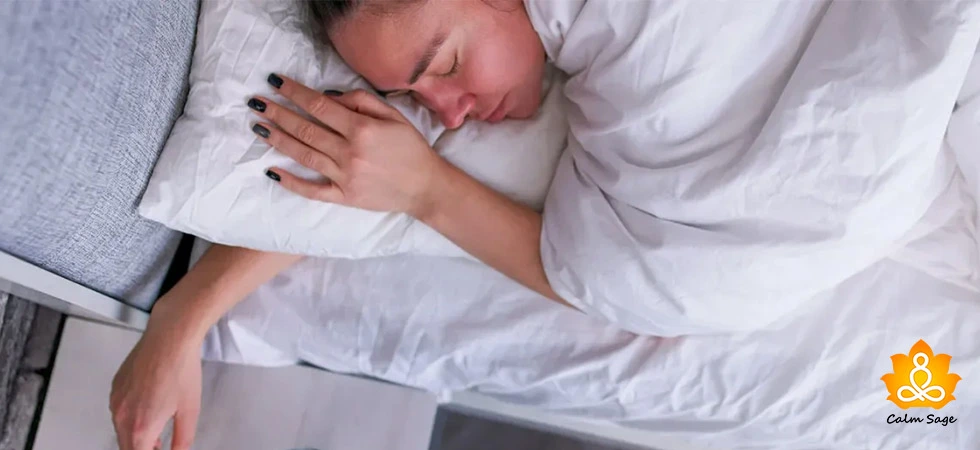11 Breathing Exercises To Help With Better Sleep
If you’re one of those people who just can’t seem to turn your mind off before sleep then these easy and best breathing exercises right before bed can help you relax and sleep better. Breathing exercises help your body and mind relax and lull you to sleep restfully.

It’s after midnight and you’re still staring at the ceiling? Can’t seem to turn your mind off and sleep? Too anxious to close your eyes and rest?
I’ve been there. There were times I found myself staring at nothing in particular at 3 in the morning, wishing for sleep to claim me but to no avail, whatever I did, I couldn’t get the sleep I needed. Years later, I told my therapist about this, and with some breathing exercises, she told me I was able to get enough sleep to recharge my mind and body.
According to ASA, the American Sleep Association, insomnia is one of the most common sleep disorders that people suffer with. Stress, anxiety, PTSD, financial stress, or any other emotional or mental condition can make getting a good night’s rest difficult. Insomnia can eventually lead to more serious health problems like chronic sleep deprivation, daytime fatigue, irritability, and even depression.
Getting at least 6-8 hours of sleep is essential for our body and mind to reset so we can wake up fresh the next morning and go about our tasks with a healthy and clear mind. These simple breathing exercises will do the trick!
1. 4-7-8 Breathing Technique
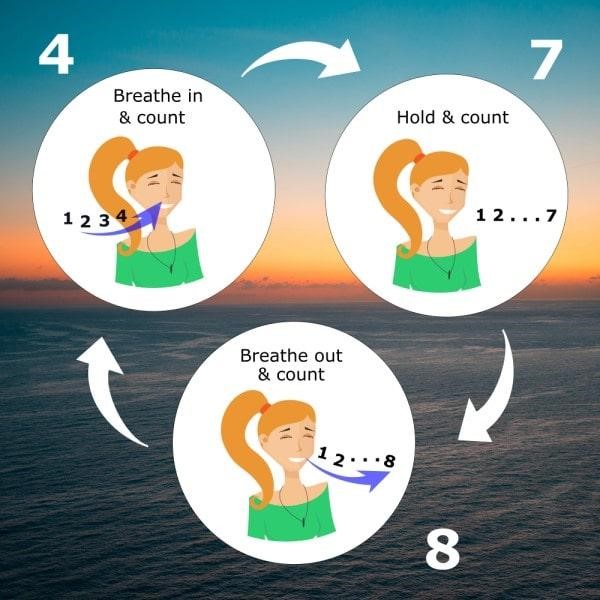
This is a rhythmic breathing technique that helps reduce anxiety and promote better sleep. Here’s how to do this:
Step 1: Part your lips and exhale by making a “whoosh” sound.
Step 2: Close your mouth and inhale via your nose for a count of 4 seconds.
Step 3: Hold your breath for 7 seconds.
Step 4: Exhale by making a “whoosh” sound for a count of 8 seconds.
Step 5: Repeat this for a few more times before eventually moving your count of repetition up.
This technique helps reduce fatigue, anxiety, and hypertension. 4-7-8 technique helps for better stress management as well.
2. Bhramari Pranayama
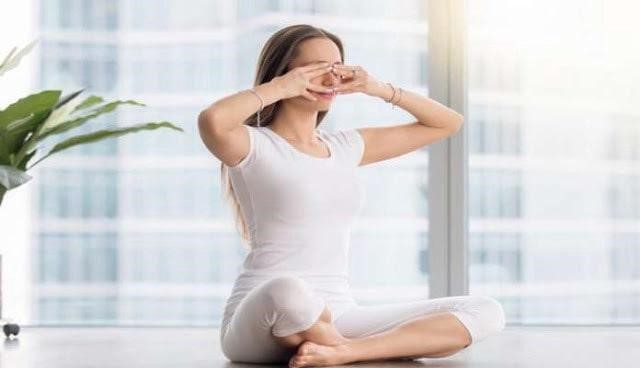
Bhramari pranayama is a yogic breathing technique that helps reduce heart rate and promotes restful sleep. Here’s how to practice this:
Step 1: Close your eyes and take a deep breath. Slowly in and out.
Step 2: Cover your ears with your hands.
Step 3: Placing each of your index fingers above your eyebrows, cover your eyes with the rest of your fingers.
Step 4: Gently put pressure on the sides of your nose and keep your focus on your brow (forehead) area.
Step 5: Breath out slowly via your nose (keep your mouth closed) and make a humming sound.
Step 6: Repeat this process a few more times.
3. Three-Part Breathing
It is one of the simplest breathing techniques to follow. Here’s how to do it:
Step 1: Take a long, deep breath.
Step 2: Exhale while focusing intently on how your body is responding and how it feels.
Step 3: Repeat this for a few more breaths. Eventually, slow your exhale so that it’s twice as long as your inhale.
Simple, right?
4. Diaphragmatic Breathing
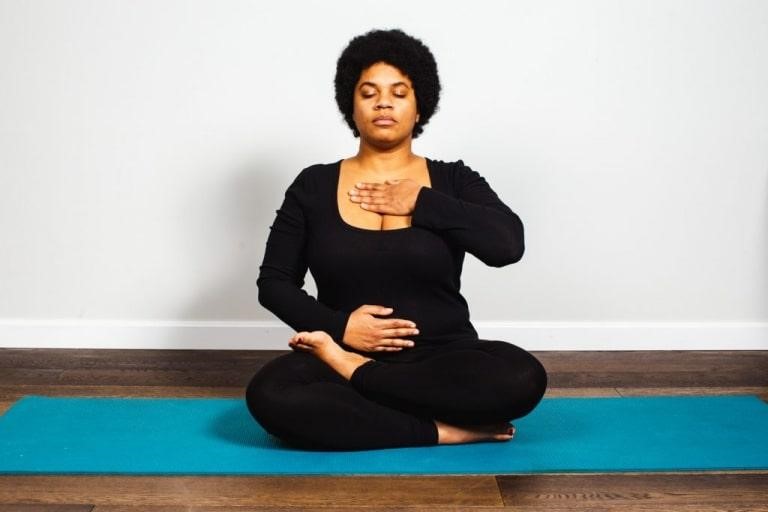
Diaphragmatic breathing is beneficial to get better sleep, but it also helps strengthen your diaphragm for better breath. Here’s how to practice this technique:
Step 1: Lie straight on your back and bend your knees. Or sit straight in a cross-legged position.
Step 2: Place one hand on your chest and the other on your stomach, flat.
Step 3: Take a slow, deep breath through your nose, all the while keeping the hand on your chest still as opposed to the one on your stomach that will rise and fall with each breath.
Step 4: Take a deep breath with slightly pursed lips.
Note: The goal of this exercise is to slow your breathing without your chest moving.
5. Buteyko Breathing
This breathing exercise helps you slow your breathing and find your calm when you’re on the verge of hyperventilating. To do this, you need to:
Step 1: Sit on your bed, close your mouth, and breathe via your nose normally for at least 30 seconds.
Step 2: Take a breath a little intentionally via your nose, once.
Step 3: Gently pinch your nose with your thumb and index finger. Keep your mouth closed until you feel the need to breathe.
Step 4: Keeping your mouth closed, take a deep breath (in and out) via your nose.
This will help you reset your breathing to a normal level.
6. Alternate Nasal Breathing
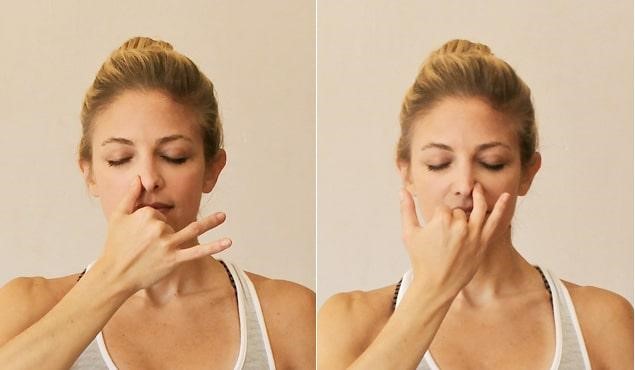
Breathing through your mouth can increase your stress, heart rate, and blood pressure. This, in turn, can trigger your body’s “fight-or-flight” response, making it difficult to sleep restfully at night. This breathing technique, also known as ‘Nadi Shodhana pranayama’ can help you relax and promote better sleep. Here’s how to do it:
Step 1: Sit in a comfortable position with your legs crossed.
Step 2: Place one of your hands on your knee and the others’ thumb against your nose.
Step 3: Exhale and then close your nostril, the one with the thumb against it.
Step 4: Inhale via your open nostril.
Step 5: Close the open nostril, remove your thumb from the other, and exhale.
Step 6: Repeat this for at least 5 minutes, finishing with an exhale via the nostril you started with.
7. The Papworth Method
This method helps you breathe naturally, reduces yawning, and sighing. Here are the steps you need to follow:
Step 1: Sit in a straight posture, preferably in bed.
Step 2: Take a deep, deliberate breath in and out, counting to 4 with each inhale (could be done via mouth or nose) and each exhale (only via the nose).
Step 3: Keep the focus on the rising and falling of your abdomen. Listen for the sounds your breath makes.
8. Kapalbhati Breathing

Kapalbhati breathing can help open your sinuses and improve concentration. It is an advanced breathing technique and it is recommended that you learn how to breathe via Bhramari pranayama before breathing with this technique. Here’s how to practice this technique:
Step 1: Sit in a comfortable position, keeping your spine straight. Place your hands on your knees, palms facing up. You can sit in a cross-legged position, on a chair with feet flat on the floor, or in a Virasana pose (sitting on your heels with knees bent and your shins under your thighs).
Step 2: Take a deep breath.
Step 3: On your exhale, contract your stomach, and force the breath out in short bursts.
Step 4: Take 15-20 breaths to complete one round of this breathing exercise.
Step 5: Relax, keep your eyes closed, and observe the awareness in your body.
Note: Two more rounds will complete this exercise.
9. Box breathing Exercise
This is a common breathing exercise when you’re meditating. Box breathing exercise helps increase your mental focus and relaxation. During this exercise, you might want to focus on the oxygen your breathing in and out. Here’s how to practice this:
Step 1: Sit straight, take a deep breath in, and push all the air out of your lungs on your exhale.
Step 2: Inhale slowly via your nose and count to 4. Fill your lungs with air with each count.
Step 3: Hold your breath and count to 4 again.
Step 4: Slowly exhale via your mouth while keeping your focus on the oxygen out of your lungs.
10. Body Scan
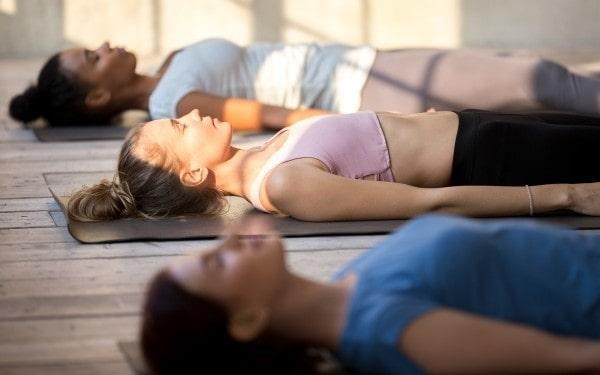
The body scan technique involves scanning your body for hidden tensions you need to release to sleep comfortably. Here’s how to do a body scan:
Step 1: Lie on your back and relax as you exhale.
Step 2: Focus on the bed and your surroundings as you relax slowly.
Step 3: Imagine or visualize every part of your body – from the head and gradually moving to the toes – to scan for any tensed spots. As you’re doing this, exhale and relax those tensed muscles.
Step 4: As you finish your scan, focus solely on your exhales. On each exhale, repeat a mantra to help induce relaxation and sleep. Words like “Om” or “Sleep” should help.
Step 5: Repeat this process until you feel your body relaxing and drifting off to sleep.
11. Visualization
The goal of these breathing exercises is to help you relax your body and mind. Apart from these exercises, you can also try visualizing. How? Here are the steps:
Step 1: Imagine the stress inside your body as a colored ball of energy.
Step 2: On your exhale, imagine this colored ball being forced out of your body – starting from your toes to your head. As it leaves your body, relax.
Step 3: Next, imagine a calm and soothing balm where the” stress ball of energy” resided.
Step 4: As the calm fills your body, imagine the “stress ball of energy” leaving your body with a force.
Note: By practicing visualization, or by visualizing the tension leaving your body, you’ll start to feel calm and relaxed as you drift off to sleep.
Things To Keep In Mind…
Before you practice these techniques, you need to keep in mind some do and don’ts:
- Keep your eyes closed as you’re breathing in and out. It will help you focus on your breathing more and the distractions around you, less.
- Keep your focus solely on your breathing. Clear your head with every inhale and exhale.
- These deep breathing exercises might not suit you if you have breathing or a respiratory problem. Before you practice them, it is important to consult with your doctor.
- If, at any point, you feel the need to breathe, don’t hesitate to do so.
- Keep practicing to understand which technique works best for you.
Remember, what works for others might not work for you.
Sleep Well…
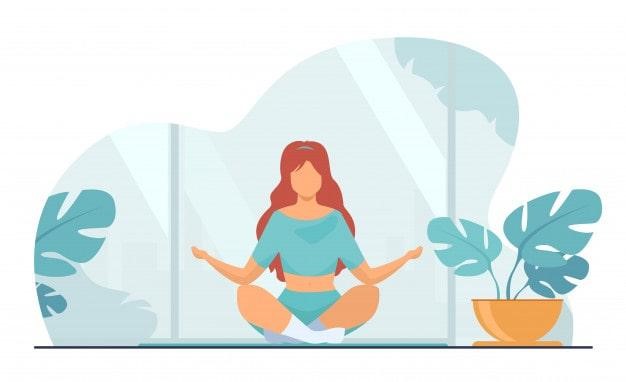
Sleep is needed to maintain a sharp focus and a clear head. If at any point, you feel dizzy or light-headed, then immediately stop or consult with your doctor. To get maximum benefit, you can also try drinking chamomile tea, lavender-infused tea, or valerian root to aid sleep.
While stress and anxiety are normal reactions to the situations we are surrounded by every day, you don’t need to take them with you to bed. To keep the stress away, try these breathing exercises, or consult a doctor if you’re struggling with sleep.
“A well-spent day brings happy sleep.” – Leonardo de Vinci








